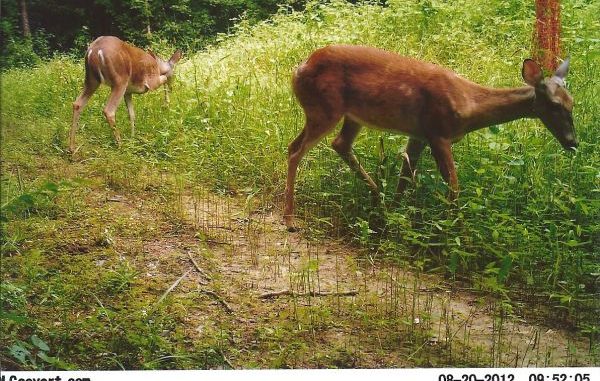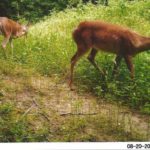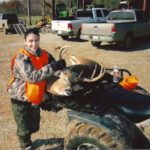
We know that when the storms of life hit Mother Nature can put the outdoors back in order, but we need our friends to help us get going again.
The lyrics to the song go something like this: “Everyone wants to slap your back when you are up on top, but lose the shirt off your back or wind up in a ditch way out in the middle of nowhere, and that is when you find out who your friends are.”
Or, as we can all relate to, have a hurricane named Isaac blow in from the Gulf and wreak havoc across the state, then find out who are friends are.
Hopefully by now if you were impacted by the storm things are being put back in order, and if you did have problems your true friends came and helped you out. There was plenty of clean-up to be done in my neighborhood, and everyone was out helping one another with the effort.
It is the storms of life that draw us close together and make us realize what is really important in this life. We all have resources that can be put to good use during these times, so let me encourage you to reach out to others beginning with those people next door or across the street.
No doubt you are making final preparations for the 2012 hunting season. The first shots of the new season were fired on Sept. 1 when the dove season opened.
I went out with my son Ruffin on Labor Day to a field that he and others had hunted Sunday, and it was interesting to see how after just one day of shooting the doves had figured out that wasn’t the place for them to be. The dove activity was extremely slow, but I did manage to make a double, and the Ruff man and I teamed up for another double.
It is easy to see that if these doves with “bird brains” can figure out us hunters, then a whitetail deer would have no problem at all figuring out what we are trying to do.
While the storm did damage our forests, it is not to the extent that other storms have done. In 1992, Andrew pretty much eliminated the acorn crop that year and ruined the red oak crop for 1993.
After Hurricane Isaac, there were lots of branches with acorns on them lying on the ground but it appears there are plenty still in the trees, so the wildlife should have a good source of food for this year.
It is a must to do some scouting just to see what damage has been done to your deer woods and this, of course, would help you determine your hunting strategy.
While we are moving full-speed ahead with the 2012 hunting seasons, I must take time to recognize the 2011 Youth Hunters of the Year, a program that is The Youth Hunter of the Year Program is coordinated by the Louisiana Outdoor Writers Association and the Department of Wildlife & Fisheries.
Twelve-year-old Emily Williams was selected as the 2011 Female Youth Hunter of the Year, and 7-year-old Joseph Scooter Hayes was selected as the 2011 Male Youth Hunter of the Year.
Emily and Scooter were recognized at the Outdoor Writers Conference in August.
The purpose of this program is to recognize our youth hunters, 15 years or younger, who are making an effort to keep the hunting tradition alive in Louisiana.
Emily, who lives in Golden Meadow, participated in a youth deer hunt on the Lake Ophelia National Wildlife Refuge and killed her first deer. Scooter, who lives in Mansura, wrote a story about his first squirrel hunt on the Spring Bayou Wildlife Management Area.
Do doubt these two now veteran hunters will be out again this season.
Both the LOWA and the LDWF encourages all youths to take advantage of the special days that have been set aside for them this season and to let them know about their experience. Information about the Youth Hunter Registry Program and the Youth Hunter of the Year Program can be found at the LDWF and LOWA Web sites.
September is the month when most landowners and clubs begin preparing their food plots, and generally by the end of October the seed is in the ground. There is a wealth of information available regarding this subject, and by now most landowners and clubs have probably developed a planting program for their lands that fits their management objectives.
The market, however, continues to expand and evolve with new seed mixtures and products. Someone can spend quite a few dollars with this management work without seeing much for their time, effort and money. It is imperative that you and the wildlife benefit from this supplemental habitat work.
As I constantly preach, the real benefit to deer from these plantings comes in the spring, when the deer need the nutrition for body growth and antler development.
During fall and winter deer, need the foods that produce fat for energy. The 2012 mast crop should provide the deer with plenty of food that fulfills this purpose, and the money spent on feed for the feeders may be put to better use elsewhere.
While deer is the primary focus, I make sure the turkeys get their fair share of the habitat work, and I have been blessed the past two years with hens that have produced poults.
With regard to the food plots, keep the plantings diverse. Mixes of winter grass and clovers work well, and provide the deer with quality nutrition, especially in the spring.
My article in this issue about the foods deer are eating shows that the use of food plot material during the hunting season last year was low, with winter grasses being eaten more than the clover.
Springtime, when the clover really begins to grow, is the time I see the heavy browsing by deer in the patches, especially on the arrowleaf clover. The rain has been such this year that the white clover has continued to grow all summer. I generally plant white ladino clover, crimson clover and arrowleaf clover in the patches.
I saw real good use of chickory in some fields this past spring in Pointe Coupee Parish, so I am going to try that in some strips this year. The cowpeas and joint vetch that I planted last spring are still growing and are being heavily browsed, and I will leave these strips alone until February, at which time I will plow them up.
I have clipped the sunflower and sorghum strips and these will be converted to winter strips shortly.
If you are interested in doing some tree plantings this winter, now is the time to order them either from the commercial nurseries or from the Louisiana Department of Agriculture & Forestry.
Tree plantings should be viewed as a long-term management activity, and will definitely compliment your food plot program. The sawtooth oaks we have in our patches have certainly worked to draw wildlife in to these sites, as well as providing a good source of fall nutrition. I believe the chestnut trees that are now being promoted are worth investing, also.
In closing, let me also suggest that you share your game with your neighbors and friends or with the local food bank. Check out the Hunters for the Hungry Program. I have had several people tell me how much they enjoyed the deer sausage they cooked during the storm and were checking to make sure the freezer had been running during the storm and that the meat had not ruined (I guess they were really saying they would like some more).
After cleaning up Mrs. Doris’ yard (her husband was a deer hunter I often talked with who passed away several years ago), she came out and handed me his muzzleloader rifle. She said she certainly did not need it and knew that I would use it, but there was one stipulation: I had to bring her some backstrap!
The Isaac rifle is a cherished gift, and Mrs. Doris will get her venison.




